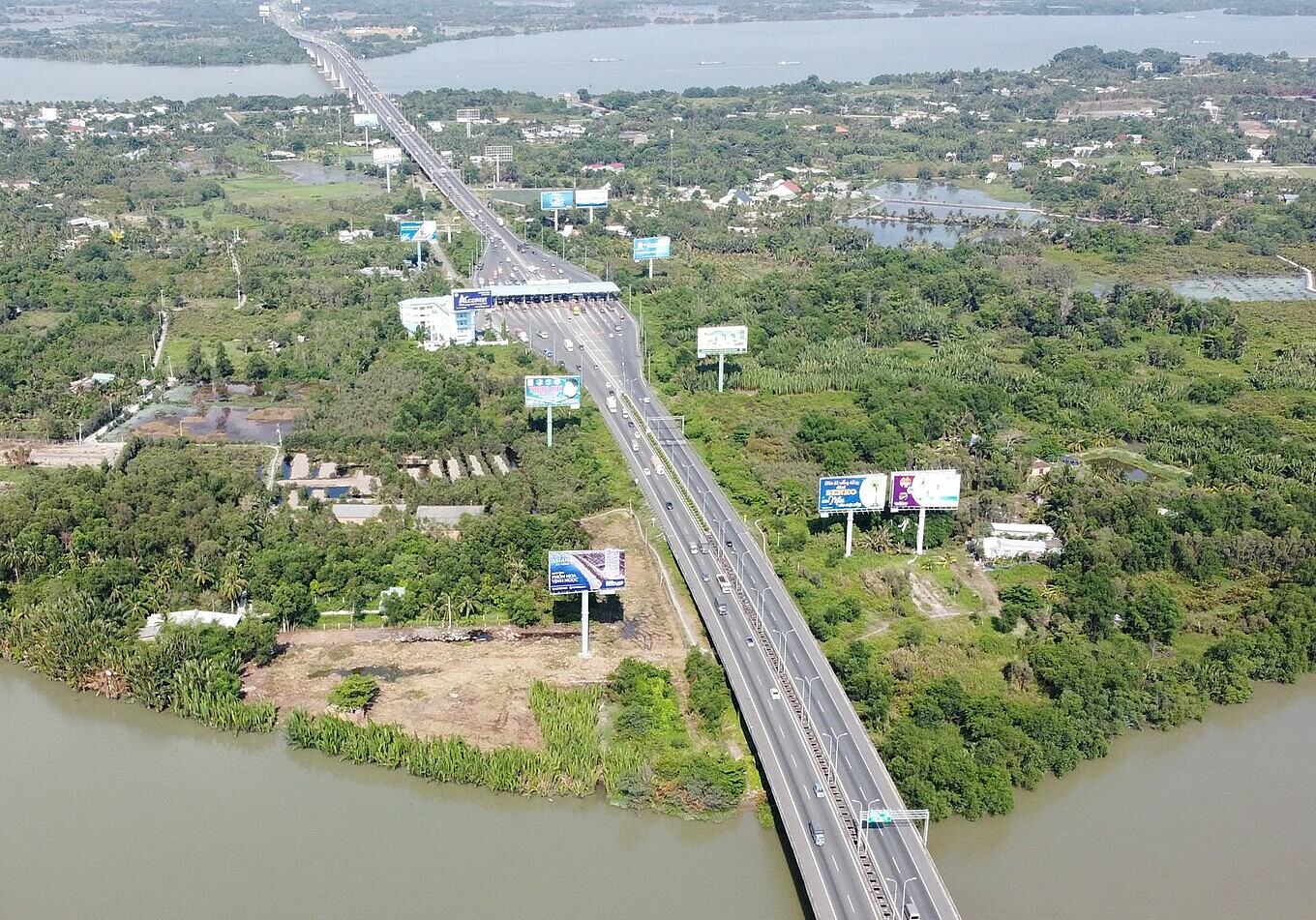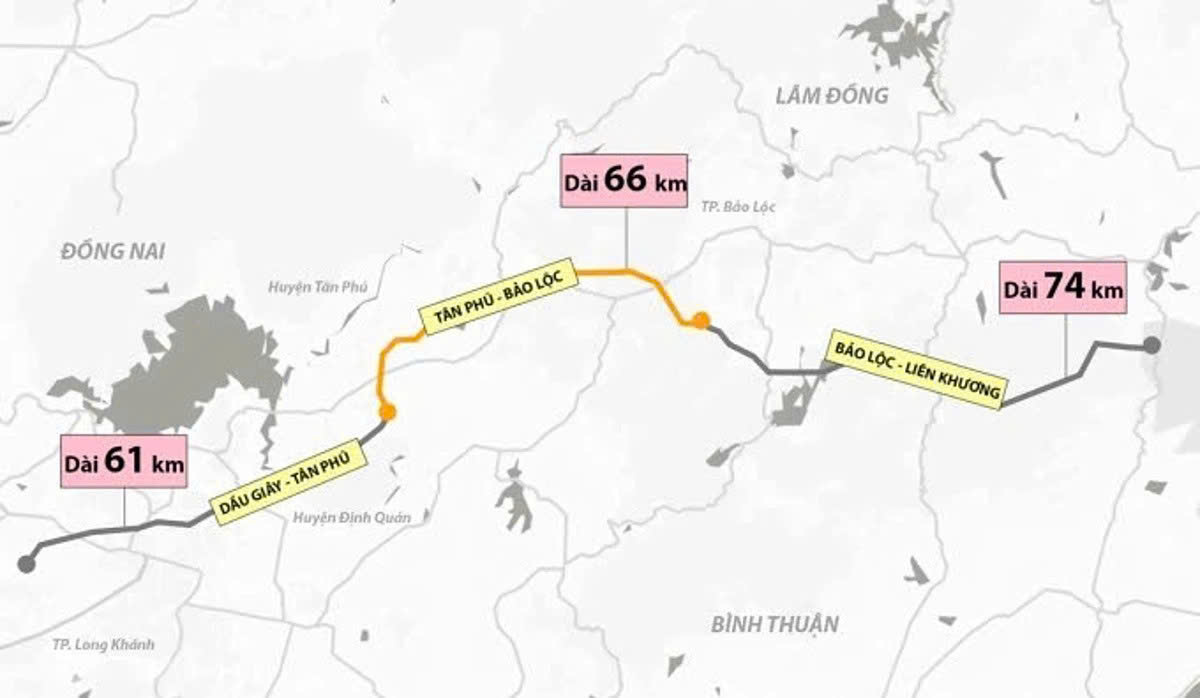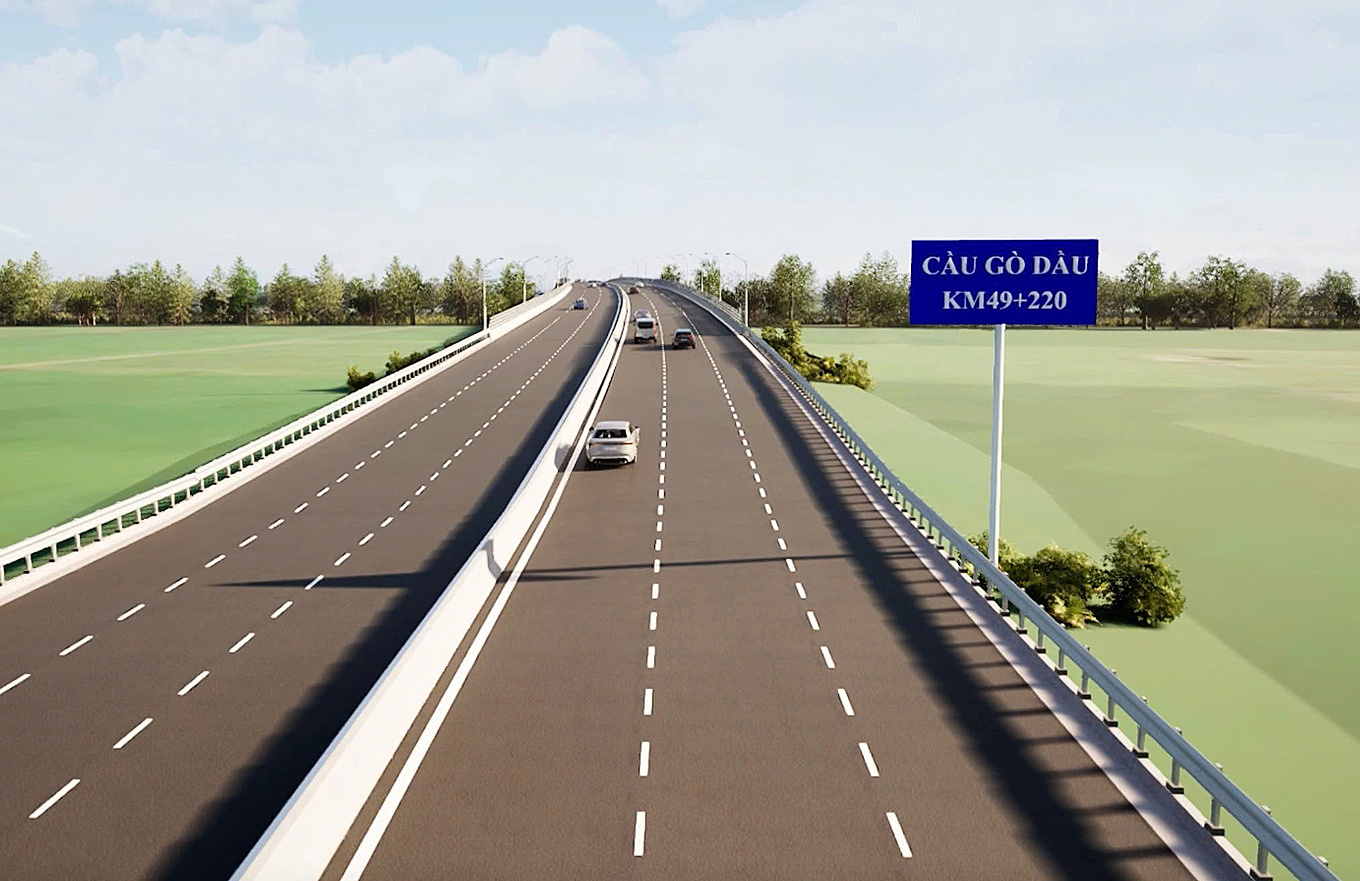The 55-km Ho Chi Minh City - Long Thanh - Dau Giay Expressway, after 10 years of operation, is frequently overloaded with 60,000-65,000 vehicles daily, reaching 70,000-75,000 during peak periods, exceeding its design capacity by 25%. This vital route connects Ho Chi Minh City with Dong Nai, Ba Ria - Vung Tau, and the Southeast region, and will directly link to Long Thanh Airport in the future.
In early August, the expansion project for this expressway officially commenced with a total investment of over 16,300 billion VND. The 22-km upgrade stretches from Ring Road 2 to the Bien Hoa - Vung Tau intersection. The 5-km section from Ring Road 2 to Ring Road 3 will be widened to 8 lanes, while the remaining 15 km will have 10 lanes. The 2.3-km Long Thanh Bridge will have a new 5-lane branch constructed parallel to the existing bridge.
 |
Long Thanh - Dau Giay Expressway section through Ho Chi Minh City. Photo: Ha Giang |
Long Thanh - Dau Giay Expressway section through Ho Chi Minh City. Photo: Ha Giang
The project is undertaken by Vietnam Expressway Corporation (VEC), with 6,500 billion VND from the state budget and the remainder mobilized by VEC. This marks the first time a public investment project has been assigned to a state-owned enterprise as the managing agency. Designated as an "urgent" project by the Prime Minister, it benefits from special mechanisms and is expected to be substantially completed by the end of 2026, with the Long Thanh Bridge finished by Quarter I/2027.
Finance Minister Nguyen Van Thang highlighted this project as one of eight main transport axes connecting to Long Thanh Airport. "Upon completion, the project will not only reduce congestion but also open up development space for the entire southern key economic zone," he stated, urging VEC to mobilize resources and expedite progress to ensure timely completion, synchronized with the airport's operation.
Directly connecting to the Long Thanh - Dau Giay Expressway, the over 60-km Dau Giay - Tan Phu Expressway project also recently broke ground, with a total investment of nearly 8,500 billion VND. Located entirely within Dong Nai province, the route starts in Dau Giay commune and ends in Phu Lam commune, connecting to the Tan Phu - Bao Loc Expressway.
 |
Planned route of Dau Giay - Tan Phu Expressway. Graphics: Tran Nam |
Planned route of Dau Giay - Tan Phu Expressway. Graphics: Tran Nam
Designed for speeds of 100 km/h, the first phase will feature 4 lanes, 17 m wide, with certain sections on soft ground and major bridges built to full specifications from the outset. Implemented under a build-operate-transfer (BOT) contract, the project is invested in by a consortium of Dai Quang Minh Company and Son Hai Group. Construction is expected to take two years, with operation commencing in 2027.
Bui Quang Thai, Director General of the Vietnam Road Administration, considers this route a key component of the southern expressway network, contributing to reducing traffic on National Highway 20, the main artery from Ho Chi Minh City and Dong Nai to Da Lat (Lam Dong). "The route shortens travel time, increases safety, and creates development momentum for the Central Highlands," he emphasized.
In mid-August, the Gia Nghia - Chon Thanh Expressway also broke ground. This 124-km route, with a total investment of nearly 20,000 billion VND, connects Dak Nong with Binh Phuoc (now part of Lam Dong and Dong Nai). It forms a section of the North-South Expressway West.
The first phase involves 4 lanes, nearly 25 m wide, with a speed of 120 km/h. Under a BOT contract, the state contributes 6,800 billion VND, with the remaining funds mobilized by the investor. Expected to be completed in 2027, this expressway will increase freight transport capacity, alleviate traffic on National Highway 14, and connect the Central Highlands with the Southeast region.
The nearly 51-km Ho Chi Minh City - Moc Bai Expressway, with a total investment of over 19,600 billion VND, is currently undergoing bomb and mine clearance and technical infrastructure relocation. The expressway starts at the intersection with Ring Road 3 (Cu Chi district) and ends at National Highway 22 in Tay Ninh.
 |
Rendering of the Ho Chi Minh City - Moc Bai Expressway upon completion. Photo: TCIP |
Rendering of the Ho Chi Minh City - Moc Bai Expressway upon completion. Photo: TCIP
The first phase will have 4 lanes and two emergency lanes, with a speed of 120 km/h. The entire route will be cleared for future expansion. The project is divided into four components, with the main expressway section implemented under a BOT contract. Expected to be completed by the end of 2027, the project will reduce congestion on National Highway 22 and enhance connectivity with Cambodia.
Bui Van Quan, Chairman of the Ho Chi Minh City Goods Transport Association, believes that the implementation of these major expressway projects will facilitate travel and trade, stimulating the development of economic corridors and new urban areas. The ongoing expressway projects demonstrate the determination of the government and local authorities to improve transport infrastructure in the southern key economic zone.
According to Quan, the Southeast region is a center for economy, services, and industry, while the Central Highlands is a vital source of raw materials with tourism potential. However, connectivity in the area has long relied heavily on the Long Thanh - Dau Giay Expressway and National Highways 1, 51, 20, and 22, leading to frequent congestion.
"Upon completion of these expressways, businesses will have access to smoother journeys, reducing travel time and costs, and increasing competitiveness," he said.
However, Quan also emphasized the need for strict monitoring of construction progress to prevent delays and disruptions to traffic and local businesses. Particularly for the Long Thanh - Dau Giay Expressway expansion, he stressed the importance of implementing comprehensive traffic management solutions to minimize congestion and ensure safety during construction.
Giang Anh












